Showing 81–90 of 121 results
“Dreams play a significant role in our life, meaningfully affecting us in the development of our personality and our spiritual journey. They are an everyday experience for any human being. Dreams have always been of great interest to poets and philosophers alike since ancient times and examples are aplenty in Indian and Western scriptures. However, it is an uphill task for an ordinary person to fully appreciate the intricacies and significance of dreams in the day-to-day life. It is here that this book proves as an invaluable guide providing deep understanding on the nature of dream and sleep.
This book is a repertoire of human wisdom – gathered for centuries and attested by the modern science – offering enormous insights into our dream and deep-sleep states. It asks, from a common man’s point of view, many a question that perturb us and provides answers to them from the scientific and spiritual perspectives in a captivating way. Some such questions include:
• Do we see dreams in black and white or in colour?
• What does a visually-challenged person see in his dreams?
• Why are some of our dreams extraordinarily vivid with electric colours, the clarity and brilliance of which, we may never encounter in our ordinary waking lives?
• Why are we non-reflective, irrational in our dreams?
• Are the dream time and waking time equal?
• How does our memory work in dream state? Why do we forget our dreams and is it possible to improve dream recall and cultivate awareness in dreams?
• Why do we fail to distinguish a dream object from the physical world object while we are dreaming?
• If the dream experience exactly feels like the real world and we fail to distinguish it from the waking world while we are dreaming, how can we be certain that we are not dreaming now?
• How does a dream contain various persons exhibiting opposite emotions at the same time when all the dream characters including the witnessing dreamer are produced out of single mind of the dreaming person?
• Can we intentionally transform the dream scenarios? If so, what would be the philosophical implications of it?
• Can dreams and sleeps be utilized for spiritual elevation?
… and many more questions we always wondered about the daily eight hours of our bed time, but never got the right answers to! We find new meanings and ways in dealing with our dreams in this volume, therefore, it is a must read for every dream enthusiast as well as any serious spiritual seeker.
“
The Socio-Literary and Cultural Study of Indian Society from Ancient to Modern is a search for India’s heritage: Hindu, Sufi and about Nationalism and India’s freedom from her colonial past. It is analytical but not learnedness. The author believes as Iqbal, the famous Urdu poet, said: “Transcend your reason because though it is a glow, it is not your destination; it can only be the path to the destination show.” People, both Indian and foreign, who want to understand Indian heritage from Ancient to Modern in a simple, agreeable style and friendly manner, is the author’s destination. In this volume, he has tried to demolish many myths like dharma is religion, Vedas are Śruti though the Almighty ordered six ṛṣis to write them down. A Hindu is just not emotional in mind, he also believes in analytic discussion (tarka). Upaniṣads are not just created by ṛṣis but also by a revolution unfolded by the students by barraging questions after questions.By explaining about the vitality of India and many other subjects, the book elucidates many things about the idea of India in an authentic manner. The readers will find here many varieties of theological explication, ultimately leading to the celebration of life while searching for the divine and realizing the self.
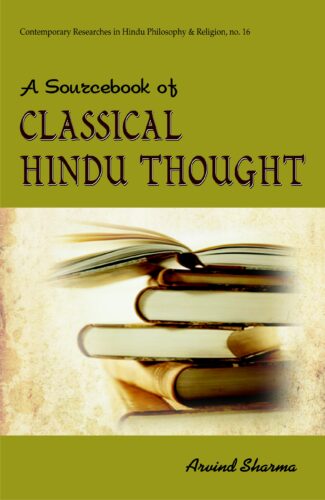
The book aims at familiarizing the readers with classical Hindu thought as enshrined in its foundational scriptures, the Vedas, for the information they provide on basic Hindu concepts relevant to the interests of students and scholars.
This volume presents material drawn from the classical Hindu texts, as well as other sources, to familiarize readers with the outlines of classical Hindu thought. It provides a bunch of readings organized around certain set concepts, quarried from Hindu religious texts of the past. It discusses material from classical Hindu texts relating to the themes of the divine realm such a brahman, devi, ishvara, trimurti, and so on, as well as of the mundane realm, such as jiva, samsara, karma, dharma, and so on. It also covers the concepts which link the two realms, such as those of maya, and the overcoming of it through yoga, to attain moksha. Some selections also throw light on what classical Hinduism has to say about the human being as a social being, through such concepts as varna, ashrama, and the purusharthas.
The volume would be of interest to all students and scholars of Hinduism, and particularly those interested in exploring Hindu philosophy and theology.
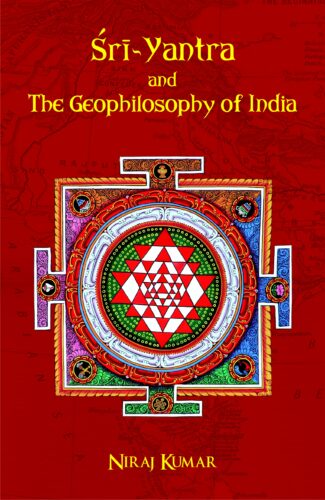
Sri-yantra, a mythical instrument, strikes a balance between the gross subtle and causal dimensions of the microcosmic and macrocosmic phenomena. It has made a strong footprint in the geophilosophy of India and beyond, and has a major stake in India’s landscape, code of Indian civilization, and is set to make a difference in various walks of Indian life.
The concept of geophilosophy, or to be more precise geo-metaphysics, is an enduring bond between the philosophical thought and its terrestrial support. Essentially the geographical positioning of a country influences its thinking and thus impacts its philosophy.
Sri-yantra, a mythical instrument, strikes a balance between the gross subtle and causal dimensions of the microcosmic and macrocosmic phenomena. It syncs with the esoteric ontology of the cosmos, the individual body, the state, the nation in its geographic aspect, all creative and conducive societal values, and the grand unification of existing dogmas, doctrines, creeds and commitments.
The author talks about his speculation of a triangular semblance of the Indian subcontinent and his intuitive experiences of ancient axioms of Eastern metaphysics. He elucidates that Sri-yantra, once esoteric, has become exoteric and can still retain its crown position in India. This book is a valuable accumulation of various facts, figures and values from myriad canons of mystic revelations. It also provides a type of interpolative vindication or justification of the two apparently conflicting ideologies of the oriental and occidental origins.
Sri-yantra has made a strong footprint in the geophilosophy of India and beyond, and has a major stake in India’s landscape, code of Indian civilization, and is set to make a difference in various walks of Indian life. This unusual volume sheds light on many a topic, which will interest readers of a wider spectrum.
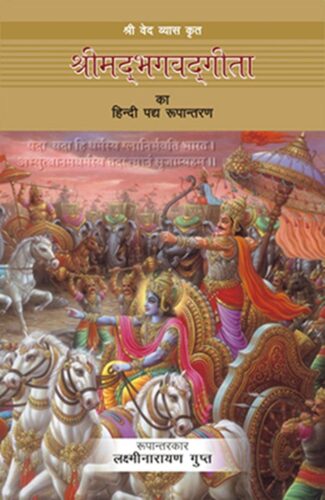
Gita is one of the several educational books maintaining its popularity. On reaching US, the author found that there are several English translated editions of Gita, but none in Hindi in verse formation. So, here the author has made an effort.
Gita occupies a special place among Indian spiritual literature. On reaching America the author found several translations of Gita available in English, though only a few were in the form of poetry. He felt scarcity of Hindi translations of these verses. This translation is a sincere attempt in filling this gap. In modern times when Hindi speakers having knowledge of Sanskrit to understand the roots of shlokas are very rare, translation of these shlokas in poetic form will not only help in understanding their meaning but also in memorizing them easily. The language used in this poetic form is very simple and even many Sanskrit words of Gita, commonly used in Hindi have been adopted. This sincere attempt of Dr Gupt transmits the actual meaning of the verses of the Gita to the readers rather than giving the views of a translator. The lovers of Gita would be highly benefited by this edition as it has been written specially to satisfy their thirst.
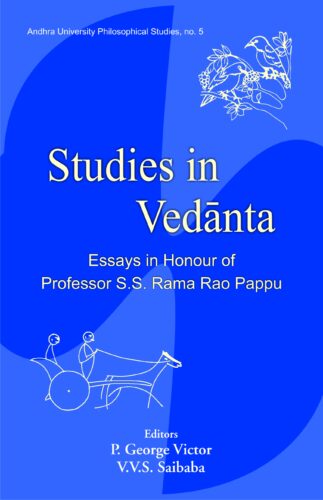
Containing both intellectually stimulating and academically entertaining essays and papers presented at the Fifteenth International Congress of Vedanta in the United States, this book honours the Congress founder, Professor Rama Rao Pappu. This volume analytically discusses the ideologies of Shankara, Ramanuja, Madhva, Vallabha, Tyagaraja and Satya Sai Baba.
Professor Rama Rao Pappu, who has been teaching philosophy in US universities since the sixties founded the International Congress of Vedanta in 1986 at Miami University, Oxford, Ohio, USA. Vedanta Congresses initiated and organized systematically and selflessly by Dr. Pappu during the past nineteen years have played a very productive and positive role. Most of the essays included here are the papers presented by the contributors at the Fifteenth International Congress of Vedanta apart from the invited essays contributed by Professor Pappus friends and admirers in India and abroad. Essays in this volume have been arranged in six sections covering the areas of Vedanta Metaphysics, Advaita Epistemology and Ethics, Schools of Vedanta and other systems, Global Parallels and finally Vedanta and the Contemporary World. Both intellectually stimulating and academically entertaining, this volume contains analytic discussions on Shankara, Ramanuja, Madhva, Vallabha and Tyagaraja. Enlightening articles on Radhakrishnan, Sri Satya Saibaba and Sunderlal Bahuguna are also included. As a whole, covering the concepts of Adhyasa, Sakshi, and Jivan-mukti, perspectives on Shruti, Yukti, and Tarka, discussions on Yoga, Tantra and Music and the East-West Parallels have culminated in Sartrean Existentialism and Chinese Dao.
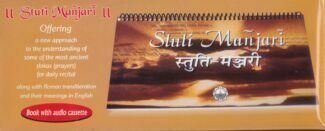
The 54 Sanskrit slokas (with Roman transcription and translation in Hindi, English) make obeisance to gods and goddesses, the guru and the Highest Reality (Brahman). Included is a tape-recorded version of the slokas, a rendering by experts in sloka-recitation.
Stuti-Manjari is a collection of some famous Sanskrit shlokas that form an intrinsic part of the daily worship and prayer of the Hindus. The fifty-four shlokas compiled make obeisance to Shiva, Vishnu and his avataras (incarnations), the Sun God, the Earth Goddess, Mahalakshmi (Goddess of wealth), Sarasvati (Goddess of wisdom) and Hanuman among other gods and goddesses as well as the guru (preceptor) and the Highest Reality the Indivisible Brahman. The shlokas praising the physical attributes of the deities and gloryfying their powers are girven in the original Sanskrit verse form followed by their transcription in Roman script and a translation of their meanings in the both Hindi and English. Accompanying this breviary is a tape-recorded version of the shlokas rendered by experts well -versed in the technical aspects involved in shlokas-recitation. The sholkas thus recited to a melodious tune not only acquaint the listener with the correct pronunciation of the words but also have the great effect of refreshing the mind when listened to in the free-flowing diction add richness to the piety evoked by the shlokas and the lofty thoughts contained in them. The shlokas are an offering of the Janana-Pravaha Centre for Cultural Studies in Varanasi which aims at promoting the meanings and message of diverse aspects of Indian culture such as, the varied art forms and classic masterpieces of literature.

The book makes a fascinating study of the unique philosophical tradition revolving around the concept of the Sunya Purusa the ineffable, indescribable and non-dual Reality that originated in medieval Orissa. Examining a range of philosophies, it throws light on the theories of this rare school of Vaisnavism that was Vaisnavite in form but Buddhistic in essence.
This pioneering study of the indigenous philosophical tradition of Orissa which evolved between the 15th 16th century ce brings into limelight the wonderful syncretism of Buddhism and Vaishnavism, traditions that are generally considered philosophically antithetical. A deep metaphysical quest underlies the enquiries and analyses of this assimilative tradition and is epitomized in the works of the philosopher-poets of Orissa in the concept of the Shunya Purusha the ineffable, indescribable and non-dual reality. This is a unique concept that encompasses within its fold the idea of Jagannatha (the Vaishnavite deity of Puri) as Shunya. The author explores the whole range of Indian philosophical heritage including Vaishnavism, Buddhism, Advaita Vedanta, Yoga, and Natha tradition to bring out the highpoints of this rare philosophical tradition. She, very competently, throws light on the philosophical theories/concepts of Bauddha Vaishnavism Vaishnavic in form but Buddhist in spirit. The book is a valuable guide on this distinctive Orissan Vaishnava tradition to all students and scholars of Indian religion and philosophy.
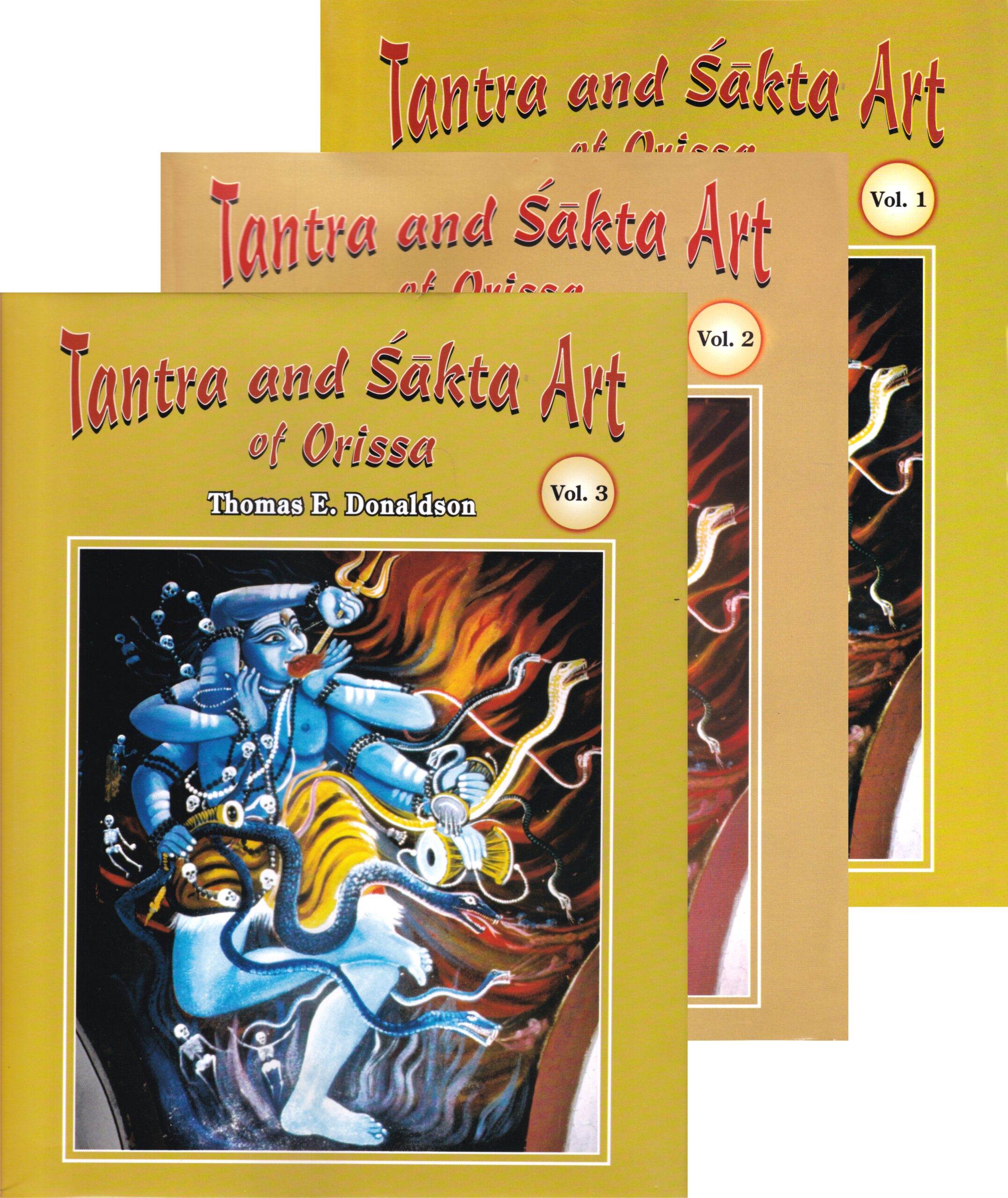
Here Prof. Donaldson presents a rich and variegated picture of the sakta/tantra art of Orissa, highlighting the evolving iconography of individual images. He focuses on different forms and depictions of the Goddess as Sakti, painstakingly analysing the architecture of a number of temples and their images.
The emergence of Tantrism and Shaktism in the sixth-seventh centuries in ancient India symbolised a belief in fertility worship, worship of the female principle with the Devi/Goddess supreme as the Energy/Power the substance of everything, pervading everything. In Orissa in particular, the shakta/tantra cults played a major role in the religion and culture of the region and this is testified by its many temples and sculptural wonders therein. In this work, Prof. Donaldson presents a rich and variegated picture of the shakta/tantra art of Orissa, highlighting the evolving iconography of individual images. Based on largely first-hand study of the temples and their iconography and also referring to various textual sources, he deals with, in detail, the shakta mythology of the region along with its depiction in iconography. He focuses on different forms and depictions of the Goddess the Matrikas, Camunda, Naga/Nagi, Manasha/Jaratkuriu, Tara, the Mahavidyas, the Yoginis and Dakinis and images of Purusha/Prakriti, Agni/Soma and Linga/Yoni, Painstakingly analysing the architecture of a number of temples and their images. The work abounds in photographs (more than seven hundred) revealing the variety of forms of the Goddess and their widespread distribution and provides many maps, diagrams and iconographical charts as well. A thorough research giving attention to minute details even while studying a wide range of iconographical traditions and forms, this work will prove an indispensable source book for young as well as established scholars.
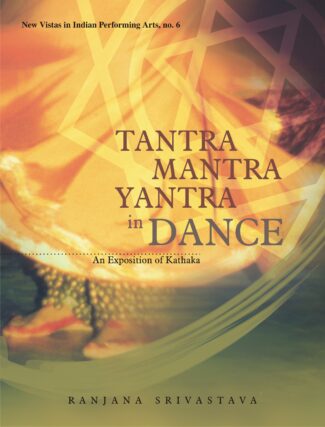
This book explores the roots of kathaka dance forms to reveal its sublime and divine dimension. It discusses the concept of Tantra and Sound and their manifestation in kathaka. It also analyses the distinct yantra formations both in the dance as well as the dance floor.
The Indian perspective has always been holistic and all-inclusive: thought and activity in different fields, at different levels, have been interlinked to produce what has been timeless. Indian arts is a classic example of such amalgamation: it interlinks aspects of art, philosophy, mythology, religion, and mysticism. This book is an attempt to unravel such links with specific reference to the Kathaka dance form. Dr. Ranjana Srivastava explores the roots of Kathaka dance form to reveal its sublime, philosophic, esoteric and divine dimensions. Focussing on inter-relationships, she unfolds how dance embraces other disciplines of Yoga Tantra, Mantra and Yantra. She discusses the concept of Tantra and its approximation and application to the dance form the way Kathaka absorbed the sacred knowledge within its form. She deals with the importance and aspects of sound in the Hindu religious scheme and its manifestation in Kathaka. Explaining the significance of the yantra as a diagrammatic/geometric representation and the way it functions, she analyses the techniques of Kathaka which create distinct yantra formations both in the physical movements of the dancer in the surrounding space as well as on the dancing floor. The study abounds in extensive notes to explain numerous terms and concepts and has references to noted works and authors on the subject. The book will be useful to experts and students of Indian art and, in particular, dance and will interest general people keen to know more about Indias art traditions.
| There are no products |